"How to make sister blades in Kobuse steel
construction"
We have received a question from a customer about making sister blades
in the Kobuse steel construction.
Sometimes, our smith cuts one outer steel into two pieces, and constructs
two blades with them, it's OK. In this case, it is the same in outer steel,
but not always the same in core steel. (=> Studying
the difference of tempering effect on the same steel)
But sometimes, he prepares one steel bar that is already constructed by
the Kobuse construction, and then cuts it into two pieces to make two blades.
That may be a way to make tanto blades of sisters.
-For example-
It is constructed with core steel and outer steel by
Kobuse style. The outer steel is fold-welded 16 times.

The steel bar is cut into two pieces to make two blades. The smith is preparing
two blades as candidates for the order. They are sisters.
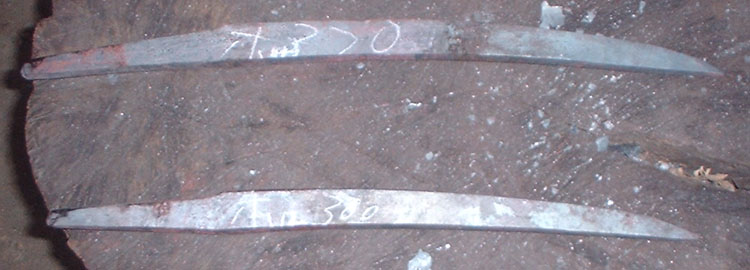
The question is;
---------------------
As I understand kobuse style
from your drawing, one blade will be correct and the other blade will have
the inner core exposed on the cutting edge.
---------------------
We think the question is very natural
from the less explanation in the article.
We will try to solve the confusion using the smith's hand drawing.
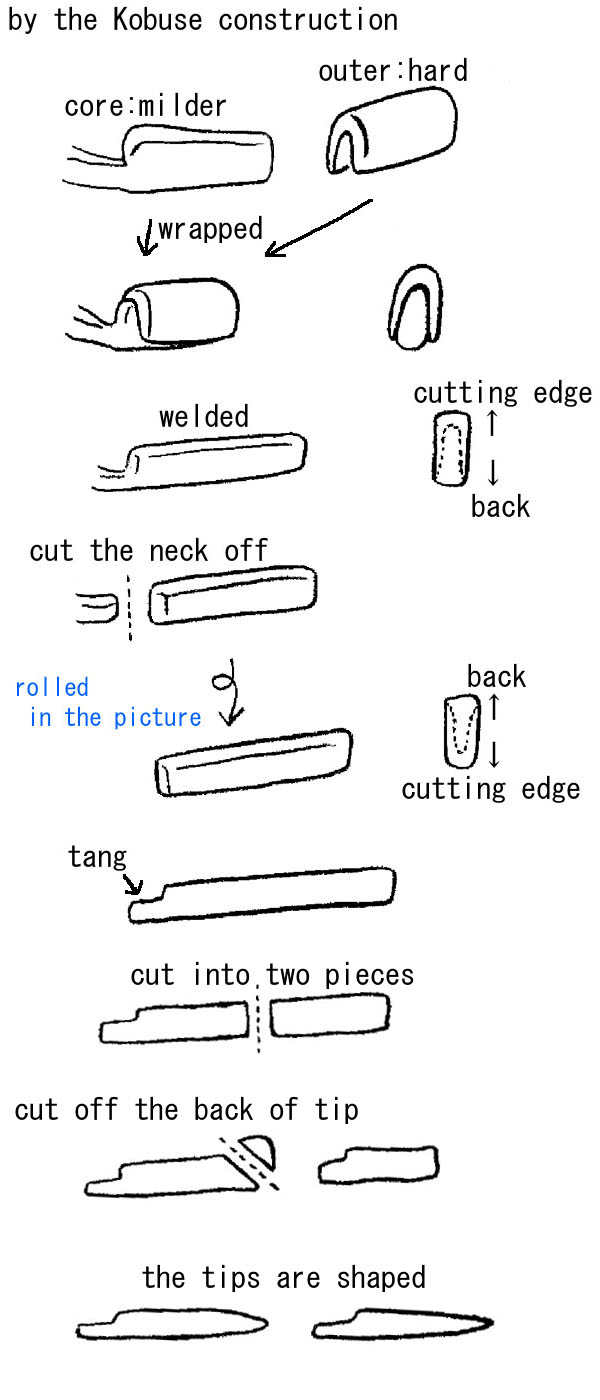
The sisters are prepared, those are the same in both core steel and outer
steel.
Incidentally, this is a cut off piece come from the back tip. The smith
collects them and makes a steel for blade again, or sometimes tsuba.
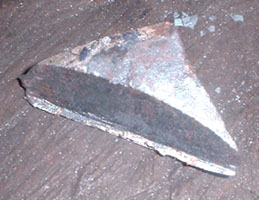
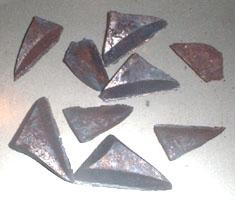
The sisters are shaped with hammer. They are Osoraku-zukuri style.
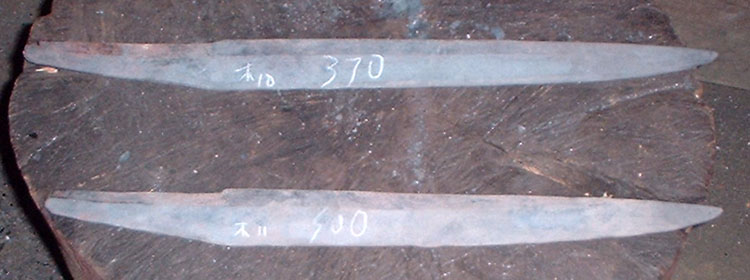
They are shaped with plane and file.

They are hardened.
Just after the work, they are on the temporary polish to see the result.
Some curvature has occurred.
The smith would make the same hardening work on the both, but the result
are not the same.
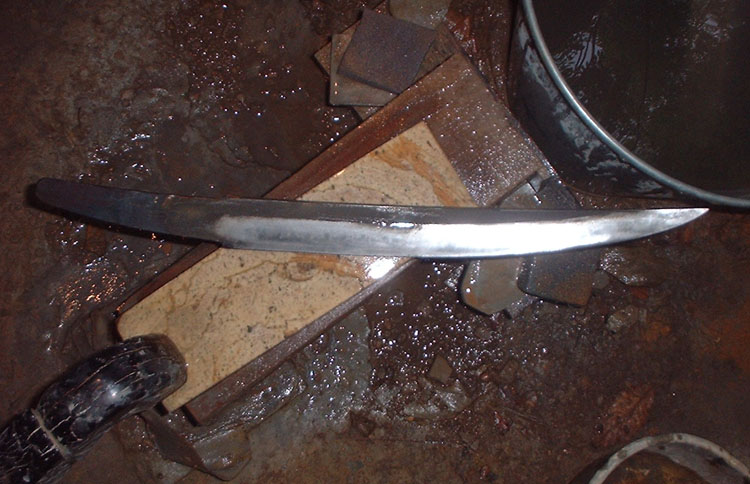
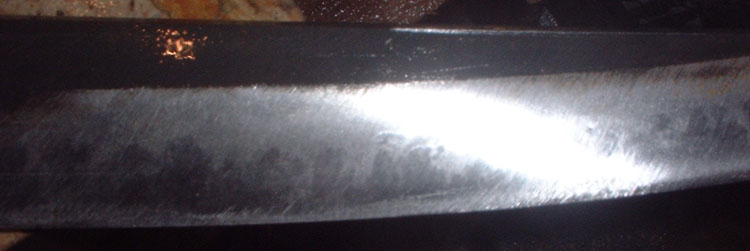


They are shaped with the Arato stone.
A)

B)

They are polishes up.
The steel particles and hamon particles on the A are denser than those
on the B. In other words, the A seems hard, and the B seems mild. The difference
of the blade character would come from the unconscious difference of the
hardening work.
A)








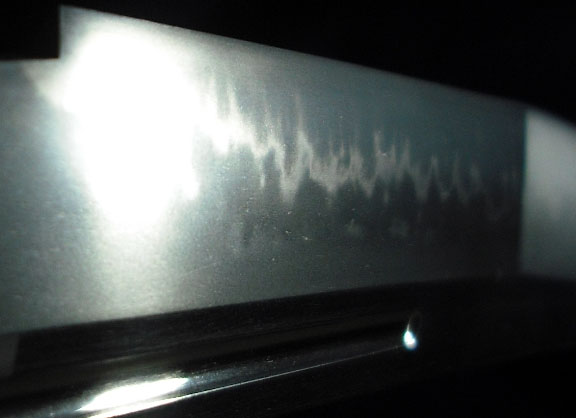
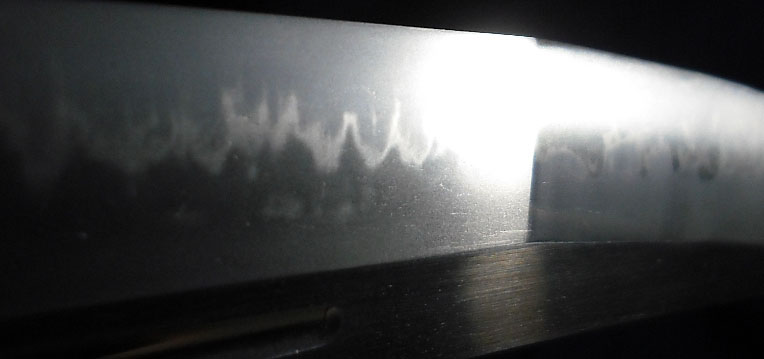
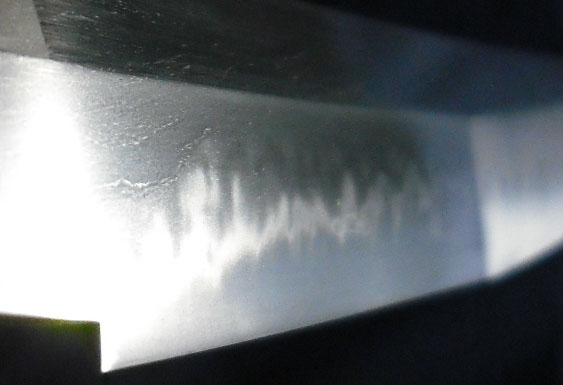
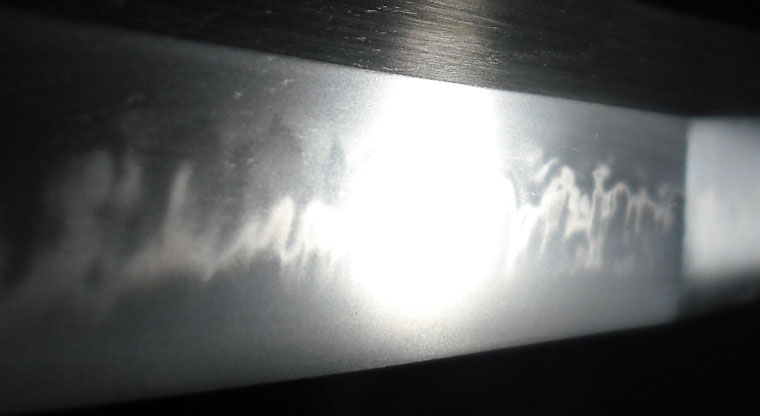
B)






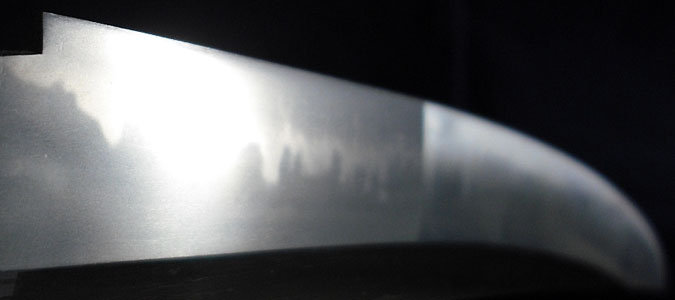
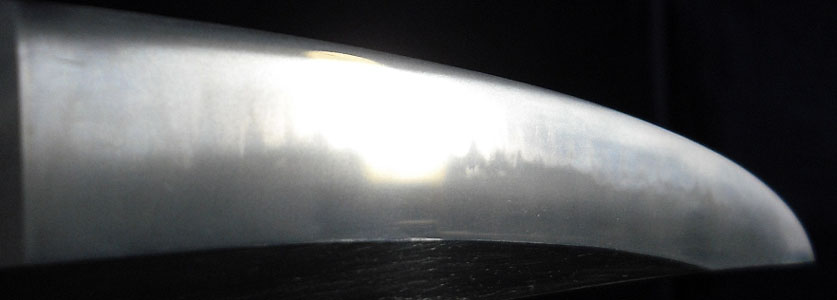
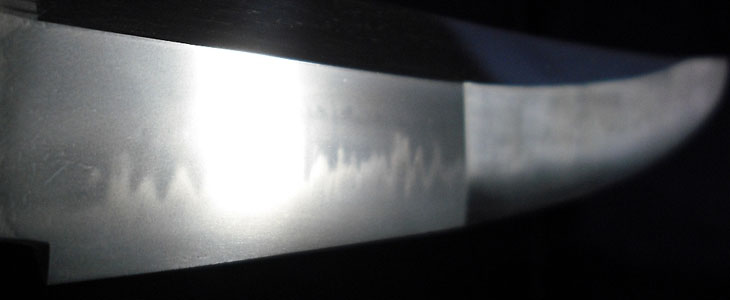
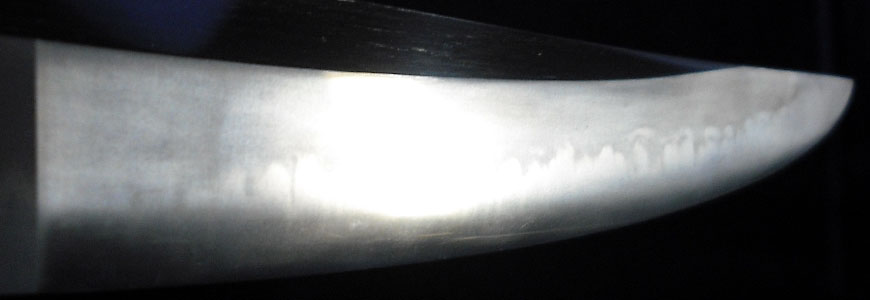
Home > Information, Smithing > Sister blades










